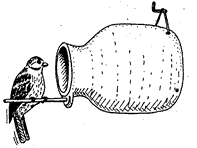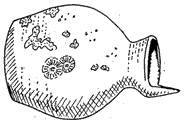|
||
<Trivia Corner> |
||||||
 |
The birdhouse is like a door from which we discover a hidden world of possibilities. Though it has been exclusive to birds since its creation, it is getting renewed attention as our project's inspiration and image for a better environmental future for the human population. Because birdhouses are usually made from material not durable to the test of time and constantly exposed to wind and rain, historical research is difficult. However, we have discovered two types of birdhouses. |
|||||
 |
||||
European birdhouse (clay style) |
||||